So, you think you've got RSI trading all figured out? Well, hold on tight as we uncover 7 key tips that might just shift your perspective.
From optimizing your RSI indicator settings to mastering its integration with other indicators, these strategies could be the game-changer you've been looking for in your trading journey.
Stay tuned to discover how these tips can elevate your RSI trading game to the next level.
RSI Indicator Settings and Adjustments
Customizing the RSI indicator settings and adjustments is essential for tailoring your trading strategy to fit your specific preferences and market conditions effectively.
The default period of 14 for the RSI indicator can be altered to align with your trading style. RSI levels of 70 and 30 typically denote overbought and oversold conditions, but these levels aren't set in stone and can be adjusted based on the volatility of the market.
Shortening the RSI period increases its responsiveness to short-term price movements, while lengthening it smoothens out noise but may cause delays in signaling changes.
Adapting RSI levels to 80 and 20 during high volatility can help eliminate false signals, providing more accurate trading opportunities.
Customizing RSI settings enables traders to optimize the indicator for various market conditions and timeframes.
Identifying RSI Signals for Entry
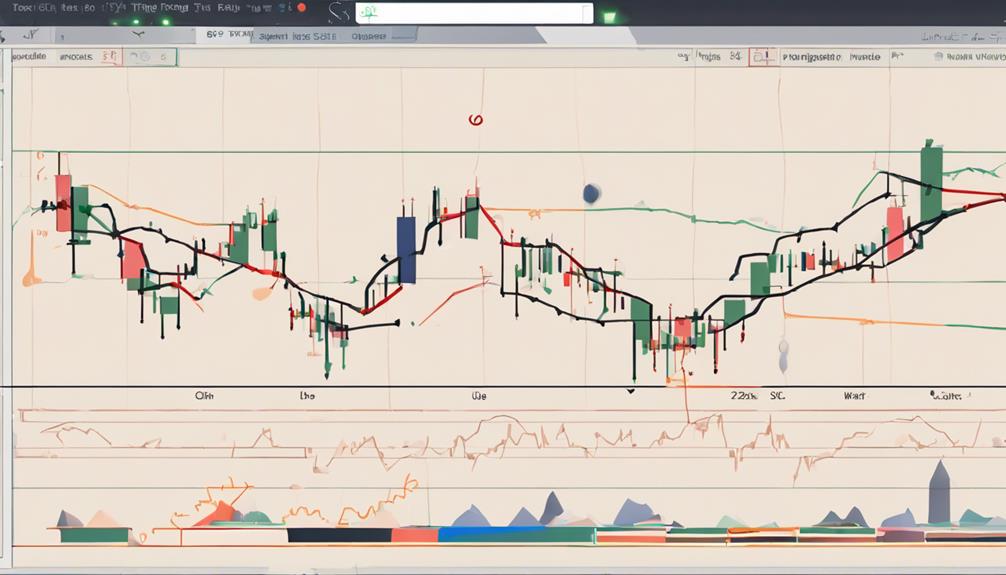
When analyzing RSI signals for entry, you need to pay attention to key thresholds like 70 for short positions and 30 for long positions. Timing your entry based on these signals can enhance your ability to catch potential market shifts.
It's essential to validate RSI signals with additional indicators or price movements for more reliable trade decisions.
RSI Entry Signals
To effectively identify RSI entry signals for trading, pay close attention to specific RSI values that indicate potential buy or sell opportunities.
- Utilize RSI entry signals like crossing above 70 for sell signals and below 30 for buy signals.
- Look for RSI divergence with price movements to confirm entry signals.
- Combine RSI signals with trend indicators to pinpoint more reliable entry points.
Timing Your Entry
Timing your entry effectively when trading based on RSI signals is crucial for maximizing your potential profits in the market.
Identifying RSI signals for entry includes recognizing overbought and oversold conditions (RSI above 70 for potential short entries and below 30 for long entries) and spotting RSI divergences to indicate possible trend reversals.
Additionally, timing entries can be refined by observing RSI trendline breaks, aligning signals across multiple time frames for confirmation, and seeking confluence in market direction.
Validating RSI signals with price action, especially at support and resistance levels, enhances the robustness of your entry decisions.
Confirmation for Entry
Utilizing additional indicators or conducting price action analysis is essential to confirm RSI signals for entry in trading effectively. When identifying RSI signals for entry confirmation, consider the following:
- Watch for RSI crossing above 70 as a potential signal for a short entry, and below 30 for a long entry.
- Enhance the reliability of entry decisions by combining RSI signals with trend indicators to pinpoint optimal entry points.
- Avoid solely relying on RSI signals; instead, use them as a filter alongside other indicators like volume analysis or chart patterns to bolster the accuracy of your trading decisions.
Utilizing RSI Trendlines Effectively
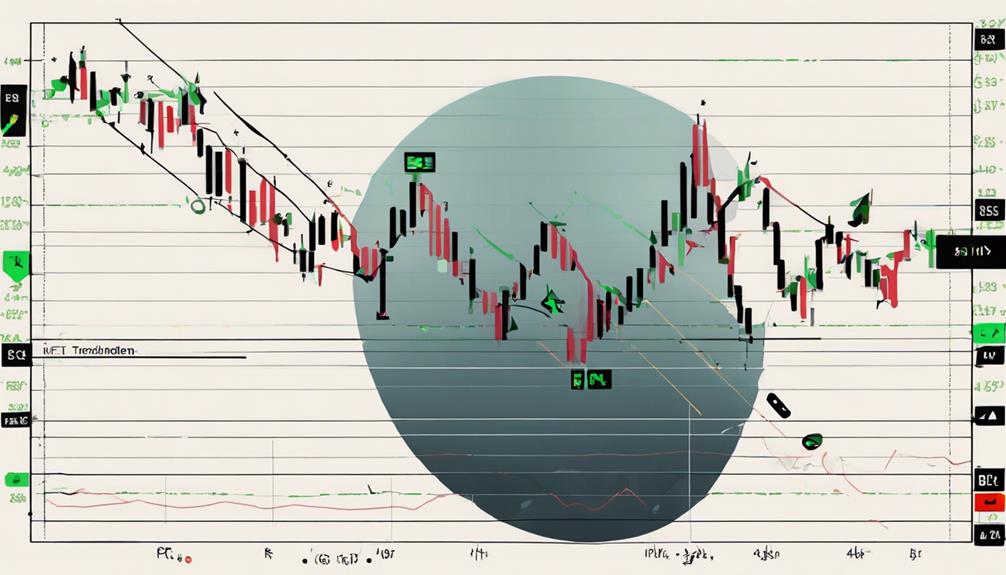
When employing RSI trendlines effectively, focus on identifying key pivot points for potential trend reversals and momentum shifts. RSI trendlines, drawn from RSI highs or lows, help pinpoint possible changes in momentum and trading opportunities.
Breaks in these trendlines can indicate shifts in momentum, presenting chances for strategic entries or exits. By drawing parallel trendlines on RSI, traders can confirm trends and establish zones for potential trades.
It's essential to align RSI trendlines with price trendlines for a comprehensive trend analysis, ensuring a more holistic view of the market. However, keep in mind that utilizing RSI trendlines alone may not always be sufficient; confirming signals with price action and other indicators enhances the reliability of your trading decisions.
Recognizing RSI Divergence Patterns
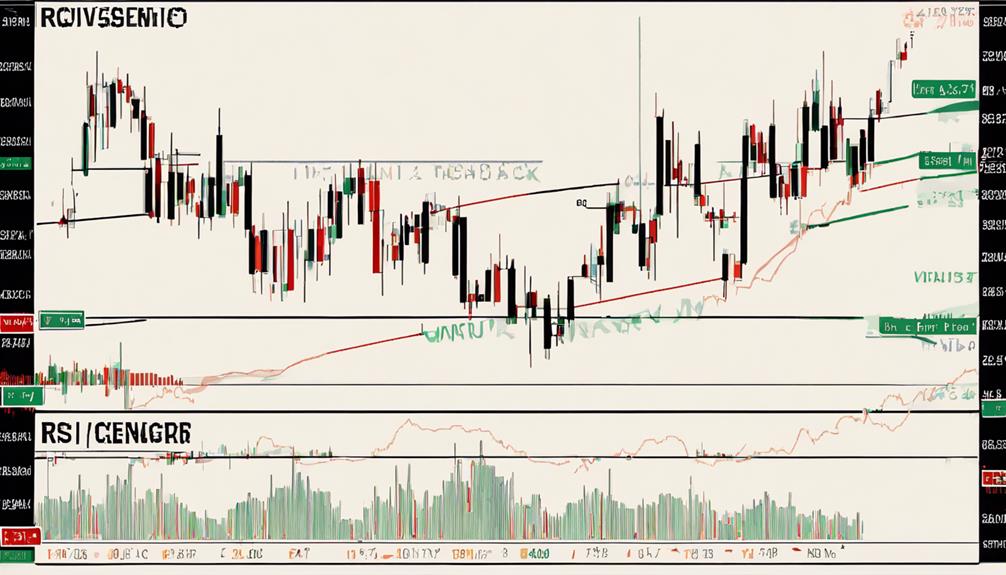
To identify RSI divergence patterns effectively, focus on recognizing instances where price movements and RSI values diverge, indicating potential trend reversals.
- Bullish Divergence: Occurs when price makes lower lows while RSI makes higher lows, suggesting a possible upward price movement.
- Bearish Divergence: Happens when price makes higher highs while RSI makes lower highs, indicating potential downward price movement.
- Early Signals: RSI divergence patterns offer early signals for traders to adjust trading strategies, confirming trend changes and potentially improving profitability.
Understanding and recognizing these patterns can enhance your trading decisions, allowing you to adapt your strategies in response to changing market dynamics effectively.
Enhancing Strategies With RSI and MACD

Enhancing trading strategies with RSI and MACD involves integrating these indicators to validate signals and improve decision-making accuracy. By combining RSI, which assesses price momentum, with MACD, which evaluates the relationship between moving averages, traders can increase the accuracy of their trading signals.
Convergence or divergence between RSI and MACD can highlight significant buy or sell opportunities, providing valuable insights for decision-making. Validating MACD crossovers with RSI can help reduce false signals and enhance the execution of trades.
Employing both RSI and MACD in a trading strategy offers a holistic perspective on market conditions and trends, empowering traders to make more informed choices based on a comprehensive analysis.
Integrating RSI With Bollinger Bands
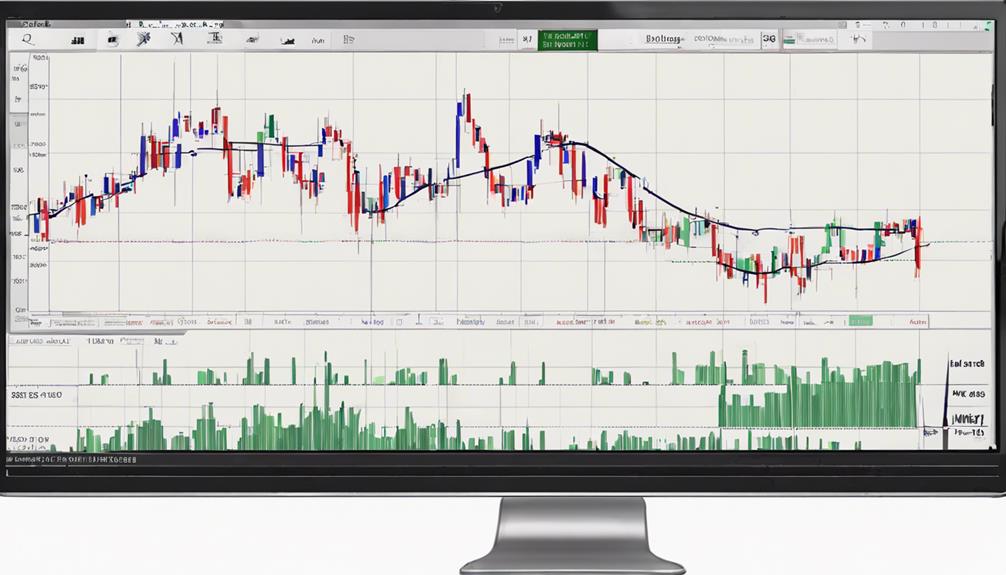
Integrating RSI with Bollinger Bands provides traders with a comprehensive approach to identifying potential trend reversals and confirming market conditions.
Using RSI in conjunction with Bollinger Bands helps spot overbought and oversold conditions more effectively.
When RSI crosses above the upper Bollinger Band, it suggests potential overbought conditions, hinting at a possible reversal.
Conversely, RSI dropping below the lower Bollinger Band indicates oversold conditions, presenting a potential buying opportunity.
Is RSI Trading a Reliable Strategy for Profitable Trades?
RSI trading can be a reliable strategy for profitable trades if you follow the seven steps to profitable trades. By understanding and implementing these steps, traders can use RSI effectively to make informed decisions and increase their chances of success in the market.
Mastering RSI in Day Trading
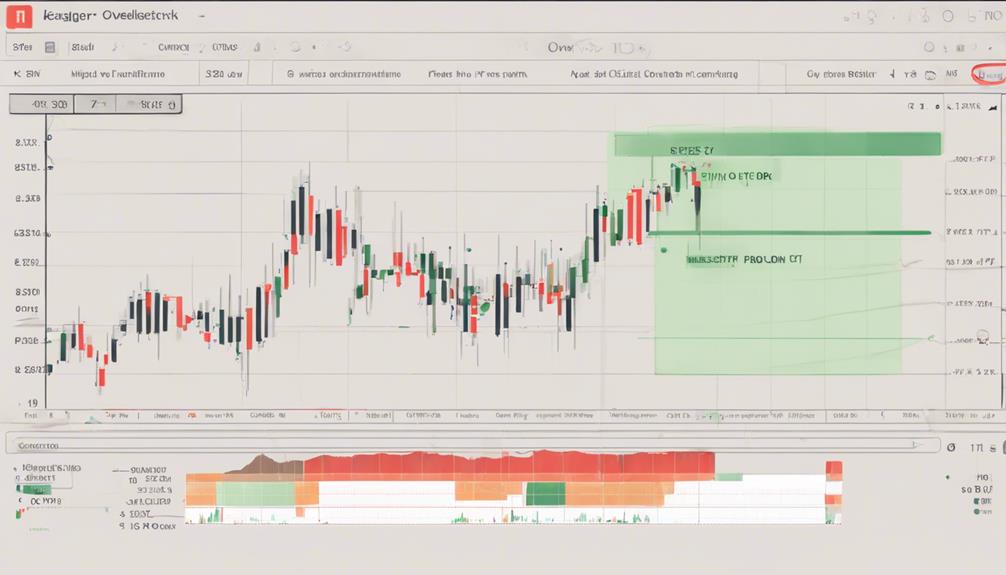
Mastering RSI in Day Trading involves fine-tuning your understanding of short-term price movements and utilizing RSI values efficiently to navigate intraday market dynamics.
In day trading, RSI with a period of 9 or 14 can capture short-term price movements effectively, while RSI values above 70 signal potential overbought conditions for traders.
Combining RSI with volume analysis can enhance intraday decisions, confirming trend reversals or continuations for optimal entry and exit points.
Adjusting RSI settings based on market volatility is key for improving signal reliability and trading success.
Frequently Asked Questions
What Is the Best Strategy for RSI Trading?
For the best strategy in RSI trading, combine RSI with trend indicators for accuracy. Adjust RSI settings to fit your trading style. Backtest various RSI strategies to find what works best. Enhance your trading efficiency and success.
How Can I Make My RSI More Accurate?
To make your RSI more accurate, adjust settings based on market conditions. Combine with indicators like moving averages for confirmation. Avoid sole reliance on RSI; consider price action. Backtest various configurations and use volume analysis for validation.
What Is the RSI 3 Strategy?
The RSI 3 strategy utilizes a 3-period Relative Strength Index for swift signals on short-term price moves. It suits day traders seeking quick market opportunities. Be ready for increased volatility and fast trades.
What Is the 5 Star RSI Strategy?
To understand the 5 Star RSI Strategy, combine RSI with indicators for precise signals. Identify overbought/oversold levels, confirming trades. Adjust RSI settings, add tools for customization. Backtest to validate effectiveness in diverse markets.
Conclusion
In conclusion, mastering RSI trading requires dedication and a deep understanding of the indicator's nuances. Just like a skilled craftsman hones their tools to perfection, traders must continuously refine their strategies to navigate the ever-changing market landscape.
By incorporating the key tips outlined in this article and staying disciplined in their approach, traders can unlock the full potential of the RSI indicator and achieve consistent success in their trading endeavors.


